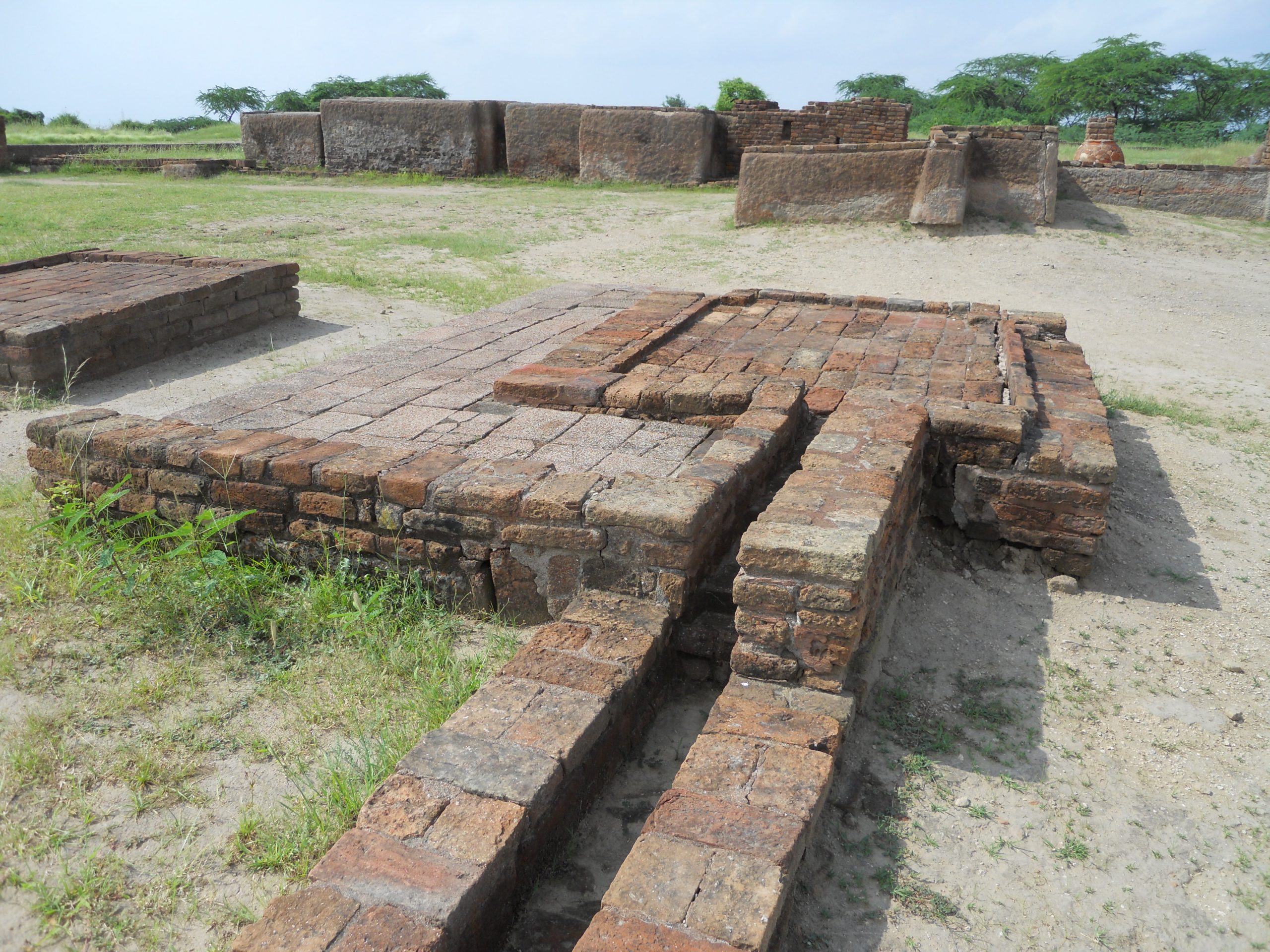News Highlight
The Lothal is all set to become a heritage complex as the Prime Minister reviewed the construction of the National Maritime Heritage Complex (NMHC) site.
Key Takeaway
- In his address, PM Modi said Lothal was not only a major trading centre of the Indus Valley Civilisation but was also a symbol of maritime power and prosperity of India.
Lothal
- About
- Lothal was one of the southernmost sites of the ancient Indus Valley civilisation.
- The port city is believed to have been built in 2,200 BC.
- Location:
- Lothal is located between the Bhogavo and Sabarmati rivers near the Gulf of Khambhat in Gujarat.
- Discovery:
- The port city was discovered after a team of archaeologists led by SR Rao started the search for Harappan civilisation post-1947 in the Saurashtra region.
- According to the Archaeological Survey of India (ASI), Lothal had the world’s earliest known dock, connecting the city to an ancient course of the Sabarmati River.
- Heritage Value:
- Lothal was nominated in 2014 as a UNESCO World Heritage Site, and its application is pending on the tentative list of UNESCO.
National Maritime Heritage Complex Project
- About
- The project began in March 2022 and is being developed at the cost of Rs 3,500 crore.
- Features:
- It will have several innovative features such as
- Lothal mini-recreation – It will recreate Harappan architecture and lifestyle through immersive technology;
- Four theme parks – Memorial theme park, Maritime and Navy theme park, Climate theme park, and Adventure and Amusement theme park.
- It will also house the world’s tallest lighthouse museum and 14 galleries highlighting India’s maritime heritage from the Harappan time until today.
- The National Maritime Heritage Complex at Lothal will be a centre for learning and understanding India’s maritime history.
- It will have several innovative features such as
Indus Valley Civilisation
- About
- The Indus Valley Civilisation, also known as the Indus Civilisation, was a Bronze Age civilisation in the northwestern regions of South Asia, lasting from 3300 BCE to 1300 BCE, and in its mature form from 2600 BCE to 1900 BCE.
- Location:
- Harappan civilisation emerged on the banks of the river Indus in the second half of the third millennium BCE and spread across large parts of western India.
- The Harappan Civilisation was widespread as it covered parts of India, Pakistan and Afghanistan.
- Major cities:
- Harappa and Mohenjo–daro – the two major sites of this civilisation – are among the earliest and finest examples of urban civic planning.
- Other cities:
- Sutkagendor
- Chanhudaro
- Amri
- Kalibangan
- Surkotada
- Banawali
- Dholavira
- Town Planning and Structures:
- The Harappan culture was distinguished by its system of town planning.
- Harappa and Mohenjodaro each had their citadel, which members of the ruling class possibly occupied.
- Below the citadel in each city lay a lower town containing brick houses, which the common people inhabited.
- The remarkable thing about the arrangement of the houses in the cities is that they followed the grid system.
- The use of burnt bricks in the Harappan cities is remarkable.
- The drainage system of Mohenjodaro was very impressive.
Content Source: Business Standard



